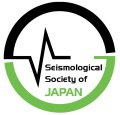 W
WIn geology, aseismic creep or fault creep is measurable surface displacement along a fault in the absence of notable earthquakes.
 W
WA harmonic tremor is a sustained release of seismic and infrasonic energy typically associated with the underground movement of magma, the venting of volcanic gases from magma, or both. It is a long-duration release of seismic energy, with distinct spectral lines, that often precedes or accompanies a volcanic eruption. More generally, a volcanic tremor is a sustained signal that may or may not possess these harmonic spectral features. Being a long-duration continuous signal from a temporally extended source, a volcanic tremor contrasts distinctly with transient sources of seismic radiation, such as tremors that are typically associated with earthquakes and explosions.
 W
WAn important parameter in the calculation of seismic hazard, maximum magnitude is also one of the more contentious. The choice of the value can greatly influence the final outcome of the results, yet this is most likely a size of earthquake that has not yet occurred in the region under study.
 W
WThe Seismological Society of Japan or SSJ is a learned society with the goal of advancing the understanding of earthquakes and other seismic phenomena.
 W
WSpectral acceleration (SA) is a unit measured in g that describes the maximum acceleration in an earthquake on an object – specifically a damped, harmonic oscillator moving in one physical dimension. This can be measured at different oscillation frequencies and with different degrees of damping, although 5% damping is commonly applied. The SA at different frequencies may be plotted to form a response spectrum.
 W
WTidal triggering of earthquakes is the idea that tidal forces may induce seismicity.
 W
WThe William Spain Seismic Observatory is located at the Rose Hill Campus of Fordham University in the Bronx, New York The seismic recordings from this location are the oldest in the region and among the oldest in the United States. It is named for a student who died unexpectedly. A plaque of St. Emidio, patron saint of earthquakes, hangs on the door of the observatory building.